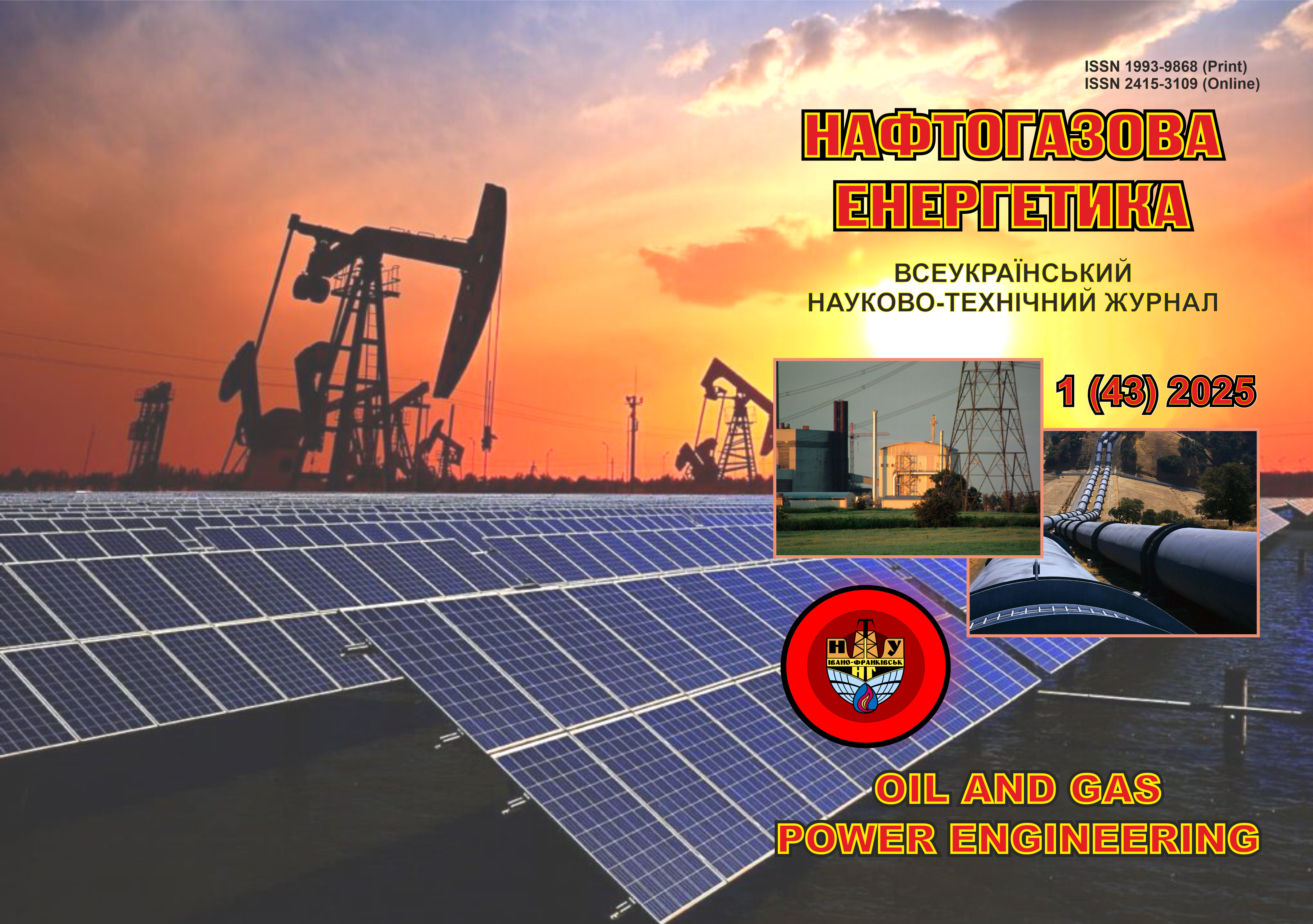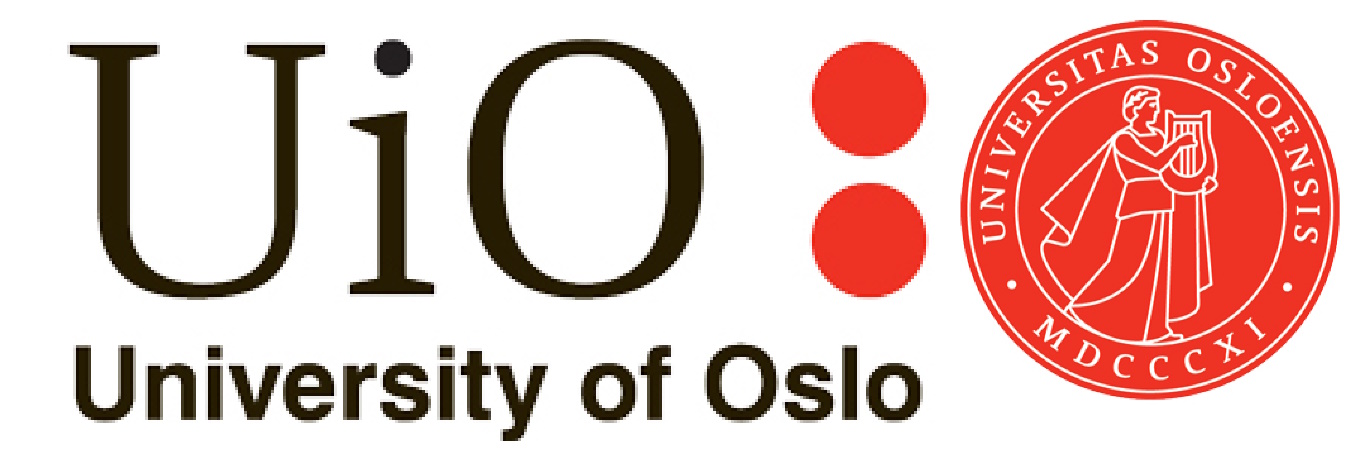RESEARCH INTO THE POTENTIAL OF USING SUPERCRITICAL CARBON DIOXIDE SYSTEMS IN DIESEL ENGINES OF OIL AND GAS TECHNOLOGICAL TRANSPORT
DOI:
https://doi.org/10.31471/1993-9868-2025-1(43)-150-160Keywords:
oil and gas process transport; waste heat recovery; diesel engine; supercritical carbon dioxide; sСО2; organic Rankine cycle; ORC; thermoelectric generator; fuel economy; fuel efficiency.Abstract
This article addresses the issue of enhancing the economic efficiency of power drives employed in the oil and gas industry. It proposes the use of supercritical carbon dioxide (sCO₂) cycles as a promising approach to modernising power equipment. Modern research and publications on this topic, both foreign and domestic, are analysed. Several unresolved issues related to the practical implementation of sCO₂ technology in the oil and gas industry are identified. The article therefore further investigates the potential of sCO₂ systems, organic Rankine cycle (ORC) systems and thermoelectric generator (TEG) systems for use in waste heat recovery (WHR) systems in oil and gas processing and transportation. Modelling results show that sCO₂ systems can recover the most energy from oil and gas process transport exhaust gases, followed by ORC systems. According to the calculations, the sCO₂ system recovered 19.5 kW at the maximum power point and 10.1 kW at the maximum torque point. Under the same conditions, the ORC system recovered 14.7 kW at the maximum power point and 7.9 kW at the maximum torque point. Additionally, at the low power and torque point, the sCO₂ system recovered 4.2 kW, while the ORC system recovered 3.3 kW. The TEG system produced significantly less power (533 W at maximum braking power, 126 W at maximum torque and 7 W at low power and torque) at all three points due to its low efficiency compared to the sCO₂ and ORC systems. It can therefore be concluded that the sCO₂ and ORC systems have the greatest potential impact on exhaust WHR systems. The prospects of using supercritical carbon dioxide cycles to increase the economic performance of power drives in the oil and gas industry are discussed.
Downloads
References
1. Song, J.; Ren, X.-D.; Gu, C.-W. Investigation of EngineWaste Heat Recovery Using Supercritical CO2 (S-CO2) Cycle System. In Turbo Expo: Power for Land, Sea, and Air; American Society of Mechanical Engineers: New York, NY, USA, 2018; Volume 51180, p. V009T38A014.
2. Gharehghani, A.; Mirsalim, S.M.; Jazayeri, S.A. Numerical and Experimental Investigation of Combustion and Knock in a Dual Fuel Gas/Diesel Compression Ignition Engine. J. Combust. 2012, 2012, 504590.
3. Gharehghani, A.; Kakoee, A.; Andwari, A.M.; Megaritis, T.; Pesyridis, A. Numerical Investigation of an RCCI Engine Fueled with Natural Gas/Dimethyl-Ether in Various Injection Strategies. Energies 2021, 14, 1638.
4. Mehranfar, S.; Gharehghani, A.; Azizi, A.; Mahmoudzadeh Andwari, A.; Pesyridis, A.; Jouhara, H. Comparative assessment of innovative methods to improve solar chimney power plant efficiency. Sustain. Energy Technol. Assess. 2022, 49, 101807.
5. Guo, J.-Q.; Li, M.J.; He, Y.L.; Jiang, T.; Ma, T.; Xu, J.L.; Cao, F. A systematic review of supercritical carbon dioxide(S-CO2) power cycle for energy industries: Technologies, key issues, and potential prospects. Energy Convers. Manag. 2022, 258, 115437.
6. White, M.T.; Bianchi, G.; Chai, L.; Tassou, S.A.; Sayma, A.I. Review of supercritical CO2 technologies and systems for power generation. Appl. Therm. Eng. 2021, 185, 116447.
7. Kim, S.C.; Won, J.P.; Kim, M.S. Effects of operating parameters on the performance of a CO2 air conditioning system for vehicles. Appl. Therm. Eng. 2009, 29, 2408–2416.
8. Marchionni, M.; Bianchi, G.; Tsamos, K.M.; Tassou, S.A. Techno-economic comparison of different cycle architectures for high temperature waste heat to power conversion systems using CO2 in supercritical phase. Energy Procedia 2017, 123, 305–312.
9. Mahmoudi, A.; Fazli, M.; Morad, M. A recent review of waste heat recovery by Organic Rankine Cycle. Appl. Therm. Eng. 2018, 143, 660–675.
10. Teng, H.; Regner, G.; Cowland, C. Achieving High Engine Efficiency for Heavy-Duty Diesel Engines by Waste Heat Recovery Using Supercritical Organic-Fluid Rankine Cycle; SAE Technical Paper, 0148-7191; SAE International: Warrendale, PA, USA, 2006.
11. Cipollone, R.; Di Battista, D.; Perosino, A.; Bettoja, F. Waste Heat Recovery by an Organic Rankine Cycle for Heavy Duty Vehicles; SAE Technical Paper, 0148-7191; SAE International: Warrendale, PA, USA, 2016.
12. Teng, H.; Klaver, J.; Park, T.; Hunter, G.L.; van der Velde, B. A Rankine Cycle System for Recovering Waste Heat from HD Diesel Engines—WHR System Development; SAE Technical Paper, 0148-7191; SAE International: Warrendale, PA, USA, 2011.
13. Laouid, Y.A.A.; Kezrane, C.; Lasbet, Y.; Pesyridis, A. Towards improvement of waste heat recovery systems: A multi-objective optimization of different organic Rankine cycle configurations. SAE Int. J. Thermofluids 2022, 11, 100100.
14. Nawi, Z.M.; Kamarudin, S.; Abdullah, S.S.; Lam, S. The potential of exhaust waste heat recovery (WHR) from marine diesel engines via organic rankine cycle. Energy 2019, 166, 17–31.
15. Mondejar, M.; Andreasen, J.; Pierobon, L.; Larsen, U.; Thern, M.; Haglind, F. A review of the use of organic Rankine cycle power systems for maritime applications. Renew. Sustain. Energy Rev. 2018, 91, 126–151.
16. Xu, B.; Rathod, D.; Yebi, A.; Filipi, Z.; Onori, S.; Hoffman, M. A comprehensive review of organic rankine cycle waste heat recovery systems in heavy-duty diesel engine applications. Renew. Sustain. Energy Rev. 2019, 107, 145–170.
17. Kumar, S.; Heister, S.D.; Xu, X.; Salvador, J.R.; Meisner, G.P. Thermoelectric generators for automotive waste heat recovery systems part II: Parametric evaluation and topological studies. J. Electron. Mater. 2013, 42, 944–955.
18. Lan, S.; Li, Q.; Guo, X.;Wang, S.; Chen, R. Fuel saving potential analysis of bifunctional vehicular waste heat recovery system using thermoelectric generator and organic Rankine cycle. Energy 2023, 263, 125717.
Downloads
Published
How to Cite
Issue
Section
License
Copyright (c) 2025 Oil and Gas Power Engineering

This work is licensed under a Creative Commons Attribution-ShareAlike 4.0 International License.


.png)






1.png)









